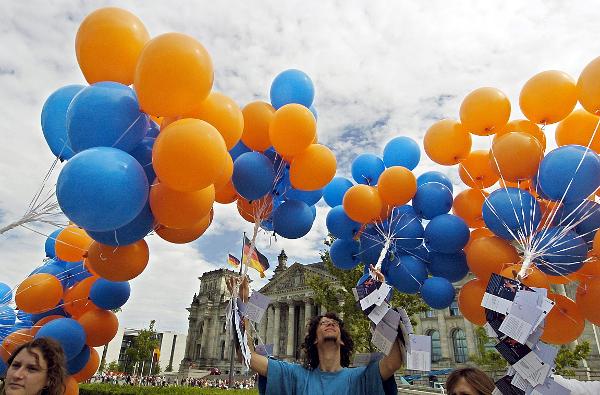Source

Source: picture-alliance / ZB (c) ZB - Fotoreport
Between February 2002 and June 2003, members of the European Convention worked under the chairmanship of Valéry Giscard d'Estaing to prepare a draft constitution that was supposed to replace the previous Treaty of Nice and enhance the enlarged EU’s operational capacity. An intergovernmental conference was subsequently convened to resolve the disputed issues; this conference also drafted the final version of the constitution. On October 29, 2004, the heads of state and government of the 25 EU member countries gathered in Rome to sign the European constitution. Following ratification, the constitution was due to take effect on November 1, 2006, at the latest. In Germany, the association “Mehr Demokratie” [“More Democracy”], founded in Bonn in 1988, lobbied for a referendum on the EU constitution by releasing more than 600 blue and orange balloons in front of the Reichstag on August 19, 2004. Attached to the balloons were postcards addressed to the members of the Bundestag; the postcards read: “Ihnen einen schönen Urlaub – uns ein Referendum!” [“We hope you have a wonderful vacation and that we’ll get a referendum”]. Campaigns for a referendum remained unsuccessful, and the constitution was ratified by the upper and lower chambers of the German parliament (i.e., the Bundestag and Bundesrat) in May 2005. However, the rejection of the constitution in referendums in France and the Netherlands ultimately prevented the constitution from taking effect.

Source: picture-alliance / ZB (c) ZB - Fotoreport